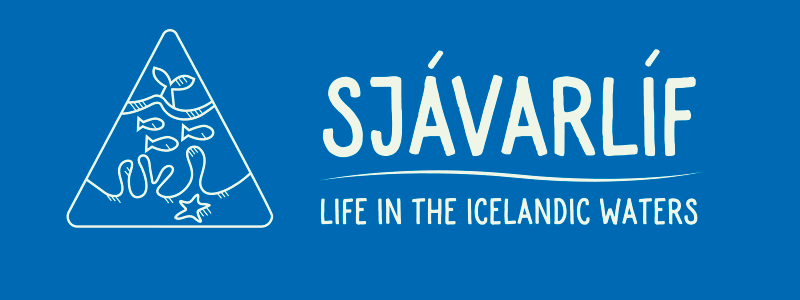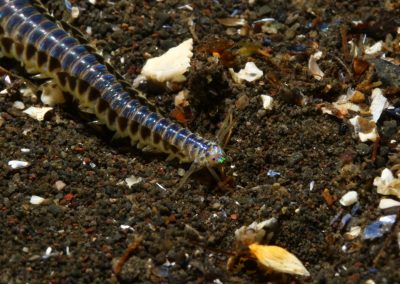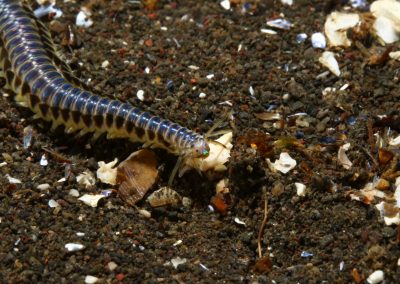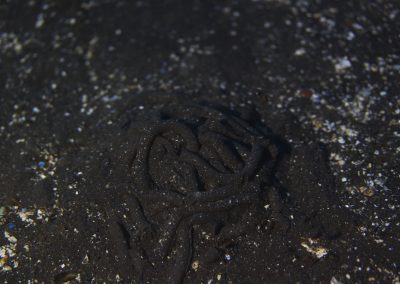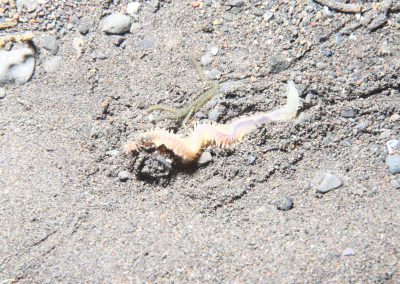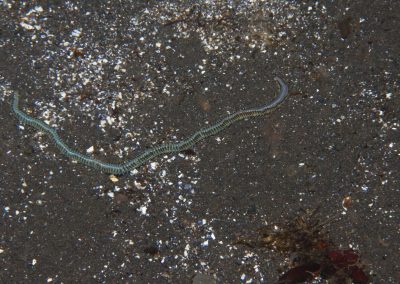Bristle worms
Polychaeta
Bristle worms are very common in the ocean and many are large and conspicuous. If you find a worm on the seashore, it is most likely a bristle worm. All of them have appendages (called parapodia) and bristles (hairs) on the appendages. These vary enormously in size and shape between species.
Bristle worms therefore have quite diverse looks and some species can get quite large. Some have very small appendages and bristles and are therefore similar as the rather simple looking earthworms, while others do not look like worms at all.
The feeding habits are also diverse; they are filter feeders, detritus feeders, scavengers and carnivores. Bristle worms are in turn important food for many fish species, especially haddock and flatfishes.
Many species of bristle worms live all over the ocean bottom off Iceland and a few species are even planktonic. Most species are what we call infauna. They live in burrows in the mud and are rarely seen unless one digs into the sediment. Some make their own tubes of sand or mud that sometimes stretch out of the bottom forming what looks like grass (see the tube worms).
There are also more mobile species that are more easily seen. They do not build tubes or burrows into the sediment but crawl around. Sometimes they bury themselves into the sediment but do not make permanent burrows (see the scale worm).
HÞV
